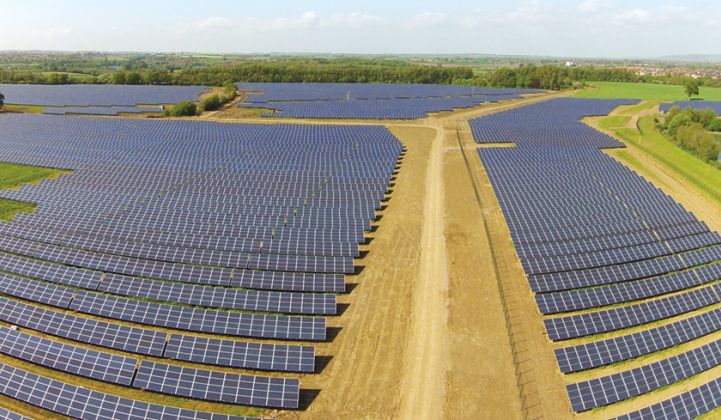The traditional approach to inverter operations and maintenance (O&M) at utility-scale solar projects has been pretty straightforward for years: When a central inverter goes down, do whatever it takes to repair it.
It’s a completely rational and understandable approach. When an expensive central inverter stops working properly, it can mean a large chunk of a utility-scale solar plant ceases generating -- both electricity and revenue.
The potentially steep price tag associated with repairing a central inverter -- especially if a PV plant is located in a remote location -- is just one of the ambiguities and unknowns in the current repair-focused inverter O&M paradigm.
Over the course of an inverter’s expected 25-year lifespan, risks and ambiguities can multiply.
“In the central inverter model, you are trying to characterize the preventative maintenance required, and understand the potential failure modes, and implement a repair strategy that gives the impression it can be sustained over 25 years in the field,” said Bates Marshall, vice president and general manager of Huawei FusionSolar Smart PV solution for North America.
“But it’s all theoretical -- it’s like saying, 'I will build this car and I promise you today that it will cost a set amount to repair it for the next 25 years,'" he said. "You may receive some reasonable-looking arguments and proof points that the expenses associated with repairs over time are reasonable, but by going down the repair path, you introduce risks that cannot be understood.”
These potential unknowns can contribute to risks that, although hard to quantify, nevertheless still exist. Among them are whether a particular central inverter manufacturer will actually stay in business over the long term and be able to repair a device using proprietary spare parts in the coming decades.
Currently, central inverters make up the lion’s share of U.S. projects larger than 5 megawatts, according to GTM Research, but that is starting to shift toward high-voltage string inverters in the next five years.
A better approach, argues Marshall, is to jettison the repair strategy in favor of a data-driven replacement O&M paradigm.
“What we are trying to do is eliminate field diagnosis and repair,” Marshall said of Huawei’s approach with its multi-phase string inverters. “Instead of getting a service engineer to the project site to diagnose the problem with specialized equipment, you just get a low-end tech in the field to swap out the string inverter.”
Data analytics equals fast action
Huawei string inverters are outfitted with highly sophisticated sensors that are able to digitally monitor voltage, current and other important inverter measurements remotely, a suite of technologies the company refers to as “automatic O&M.”
The collection of data takes place on the string level and the information that is collected by the sensors allows for I-V curve (current-voltage) tracing.
“The string-level voltage and current information is captured at 0.5 percent accuracy, which is very high,” said Marshall.
At the recent Solar Power International conference in Las Vegas, Huawei announced a partnership with PV solar monitoring firm AlsoEnergy to embed Huawei’s I-V curve function in its software.
The granular, string-level information collected by the string inverters is delivered via SCADA software to a centralized location where it is analyzed to look for system faults. When there is a problem, the PV plant operator receives an alert.
“You’re automating your diagnosis and defect classification,” said Marshall, “and then your required action is always to replace the inverter.”
Huawei also leverages its legacy as a telecom and technology giant in order to quickly deliver large amounts of data from the field to be analyzed. Instead of using an RS485 connection, Huawei leverages power line communication.
“It’s an order of magnitude faster,” said Marshall, “so we basically have more data and bandwidth to do more complex analytics at the SCADA level.”
Third-party O&M providers have told Huawei that the data analytics Huawei is providing can reduce their costs 10 to 20 percent compared to central inverters, largely driven by less preventative maintenance and repairs being required. Marshall said that when taking into account the inverter replacement reserve and any advantage in O&M, automatic O&M delivers a $0.04 to $0.05 per watt advantage over the life of the project.
The savings make string-level O&M not only more cost-competitive with central inverters, but also render utility-scale solar projects in North America even more cost-competitive with other generation in the long term. “The long-run costs are crucial as we start to think about full project economics,” said Marshall.
For more on the future of utility-scale O&M, check out Huawei's recent webinar with Greentech Media.



